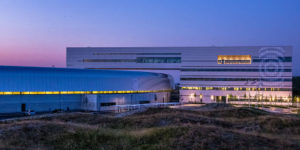For researchers at any university, making the most of great national and international research infrastructure ventures is both an opportunity and a challenge. If Swedish universities also have to draw on their government funding to co-finance national research infrastructure, the challenge becomes more complicated. It requires national coordination and to this end the vice-chancellors of the ten largest universities have set up a special group – the Universities’ Reference Group for Research Infrastructures (URFI). It is this group that negotiates with the Swedish Research Council’s Council for Research Infrastructures (RFI).
As Adviser to the Vice-Chancellor on Research Infrastructure at Uppsala University, I am in a position to influence how we develop, manage and use research infrastructure as best possible. I am the University’s representative in URFI. There are many types of research infrastructure and it is a major undertaking just to identify all the instruments, collections, databases, technology platforms and biobanks in our own organisation. To help me in this, I have an Advisory Board for Research Infrastructure, consisting of representatives of the three disciplinary domains, the University Library and the student body. We can submit proposals on the coordination of research infrastructure. We can identify opportunities and weaknesses in the research infrastructure landscape. We can also assist the Vice-Chancellor and the three disciplinary domains by clarifying funding streams, governance and strategic planning. Of course this does not occur in isolation, it is coordinated with URFI/RFI and international parties.
Research infrastructure can be invisible or really beautiful, and at the same time truly useful. One of the most beautiful infrastructures, which has actually won a European prize for its appearance, is the MAX IV Laboratory in Lund. The silver synchrotron light ring shines out across the plain, but it is the research content, created with hard work and passionate commitment by researchers from Uppsala University and other institutions, that is the real attraction.
One of the less visible sides of infrastructure is our treatment of research data. This is a major issue for the entire University, because of stricter legislation on the handling of sensitive data and demands that research data created using public funding should be open and accessible. Here, the Advisory Board seeks to contribute proposals on how we specifically should work on these issues, in line with other universities in Sweden and internationally. Uppsala University is responsible for the Swedish National Infrastructure for Computing (SNIC), which provides data storage resources for data in use, but after processing has been completed the data must be archived, and this is the University’s responsibility. SNIC incorporates the University’s own data centre UPPMAX, which has a national responsibility and know-how regarding sensitive data. Support is needed at several levels. Researchers need support in the form of correct information about which system is right for their specific needs. They also need support regarding the format in which open data should be stored so as to be searchable and accessible to others. This applies to researchers in all disciplinary domains and clear and correct information is vital.
I never cease to marvel at the wealth of the knowledge, research ideas and research collections possessed by this University, Sweden’s oldest, and I hope I can help to make life a little easier for our researchers and pave the way for them to carry out the best research.
Kristina Edström
Adviser to the Vice-Chancellor for Research Infrastructure


